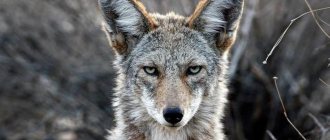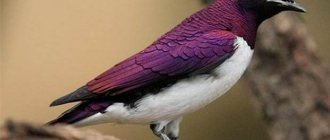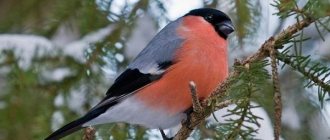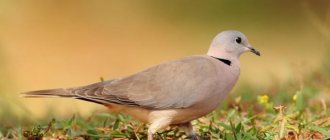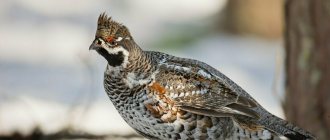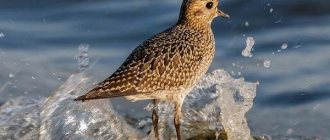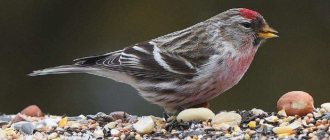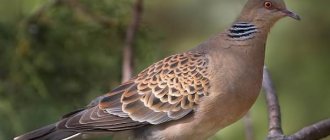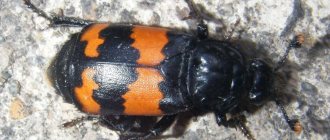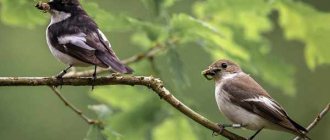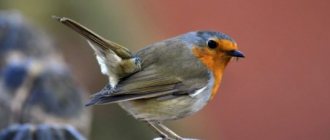- September 20, 2018
- Man in the wild
- Victoria Litvinova
The snipe bird, a photo of which you will find in our article, is a representative of the genus and family of the same name. This creature is characterized by an attractive appearance and small size. The bird is hunted by people from all over the world, which is why the snipe population is significantly reduced. These birds are found in many regions; you can stumble upon them in swampy areas. You will learn about the features of the appearance, lifestyle, nutrition and reproduction of snipe from our article.
Description
The main feature of the bird is its small size. The snipe pictures presented in the article confirm this. Adults grow up to 27-28 cm with a body weight of 200 g. Snipes got their name from the French word “sandpiper,” which indicates their similarity. However, there are a number of distinctive features that the snipe has. What does this bird look like?
The color of the feathers is very variegated and is characterized by a large number of unusual patterns. The back and sides are reddish or light brown. In color, snipes resemble admiral butterflies. Thanks to their plumage, birds can camouflage themselves among trees and lead a secretive lifestyle.
Their beak is long and thin, ideal for obtaining food from hard-to-reach places. The size of the beak is on average 7-8 cm. Sometimes snipes bend it a little to get food. The eyes are located far from the beak, on the sides of the head. This feature allows birds to notice danger in time and navigate well in space. An interesting fact is that snipes, like owls, see the surrounding space at 360 degrees.
Looking at the thin and fragile legs of the birds, you cannot say that snipes are able to move nimbly on them. However, representatives of this genus not only move quickly on their feet, but also have tenacious claws. Their paws allow them to travel long distances in sandy and marshy areas.
Lifestyle
Snipe is a very secretive and cautious bird. Its main life activity occurs in the evening, night and predawn. You can hear the voice of a snipe very rarely, only either in the spring during mating, or when the snipe takes off from fright.
When danger appears, the snipe tries to run away and hide, finding some kind of shelter. The snipe runs very deftly, even through tall grass. If it is impossible to escape, the snipe takes off, and during takeoff it makes a sound similar to “chwek” or “zhvyak”. The first few meters after takeoff, the snipe does not fly in a straight line, but as if in a zigzag, swaying as it does so.
Snipe can run well, flies quickly, although it does not have webbed feet, and can swim and even dive.
Snipe is a migratory bird. For the winter, the snipe flies to Southern and Western Europe, South Asia and Africa. The gradual flight to the south begins at the end of August, the bulk migration of snipe from the north into central Russia occurs at the beginning of October.
In the spring, snipes return to their nesting sites; the first migratory snipes appear in March. Snipes arrive in central Russia in mid-April; snipes arrive in the northern part of their range and tundra at the end of May.
The high caution characteristic of the snipe allows it to live to a very serious age, for birds, of 10 years. Snipe is capable of leaving 5-7 offspring during its life. Of course, not all snipes live to such an old age; most of them die from predators.
In its natural environment, the snipe has many enemies who are not averse to feasting on either the tender meat of the snipe itself or the contents of the eggs in its clutch. On land, the snipe's enemies are the following predators: foxes, martens, stray dogs and cats. In the air, the following dangers for snipe include: eagles, kites, crows, hawks, and owls. The snipe cannot protect itself or its clutch; the female has to crouch low to the ground, cover the eggs with her body and rely on the natural protective coloring of her feathers.
Great snipe
As you might have guessed, the name was given to these birds because of their enormous (relative to other species of snipe) size. Height is from 40 to 45 cm, weight is about 450-500 g. Representatives of the species are characterized by a powerful physique. Legs are short; the wings are slightly rounded, with a beautiful pattern. There are dark stripes on the light back and sides. There are individuals with a yellow neck and head.
Females and males do not differ from each other in appearance. Birds lead a flocking lifestyle and make seasonal migrations. They live mainly in South America. Most often found in Brazil, Venezuela, Colombia and Guyana. They can sometimes be seen in Bolivia, Paraguay and Uruguay. The number of species is quite high.
American snipe
The bird, the photo of which is presented in our article, lives in North America and winters in South America. Their body dimensions are 25-27 cm with a weight of 100 g. The peculiarity of the species is that the beak grows short: only 5-6 cm. For comparison: the common snipe has a beak of this size in the first months of life.
Representatives of the species are distinguished by very bright colors. Feathers can be gray, dark brown, blue, emerald, greenish. The legs are long and light green. There are small dark spots on the feathers. Within a month after birth, the chicks begin to hunt and seek shelter on their own.
Japanese snipe
Representatives of this species are in greatest need of protection. The fact is that its numbers are rapidly declining. Scientists from Russia, China, Korea and Japan have taken measures to preserve the population, due to which the number of individuals has increased. In their natural habitat, Japanese snipe can become food for foxes and raccoon dogs. Crows often destroy their nests.
In terms of appearance, Japanese snipes are very similar to common snipes, which is why they are constantly confused. When flying, representatives of the species gracefully flap their beautiful wings. When taking off, a so-called “pop” is produced, characteristic only of the “Japanese”.
African snipe: description
Who is a snipe? This is a bird that is found on many continents. For example, representatives of the African species live in southern and eastern Africa. In terms of physique, they resemble large snipes: they have the same short legs and voluminous plumage. There are dark stripes on the head and neck. The feathers are light brown, the belly is white or yellowish. The beak of this species is very long, because the birds obtain food from dry desert soil.
In flight, the African snipe is somewhat slower than the common species. On the ground, it is difficult to recognize which of the two birds belongs to the African variety.
Forest snipe, or great snipe
Another species of bird is the snipe (see photo below), which differs significantly from its relatives. Its dimensions are on average 30 cm, weight reaches 180 g. A characteristic characteristic of snipes is a wide wingspan, which exceeds 50 cm.
The bird lives in Russia, in the territory of Eastern and Western Siberia and the Far East. In winter, the snipe migrates to Australia and Asian countries. It is found both in dense forests and in steppes. Settles near bodies of water.
Nesting
In May, sometimes in June, the snipe (female) builds a nest. Most often it is located on some kind of hummock. Typically, preference is given to manes with sparsely growing spruce and birch trees, stumps, sedge bogs and damp meadows with scattered islands of alder. Sometimes female snipes build their structures for their offspring in a damp coniferous forest.
The shape of the nests of these birds looks like a small depression, which is dug in the ground and covered with dry vegetation, most often grass stems. The thickness of the layer of such litter is approximately 20 mm.
The wading bird snipe usually lays four variegated eggs, shaped like a cone. Their main color is most often olive with the addition of brown and yellow shades and brown or gray spots. The incubation period for eggs lasts 18-20 days. The male does not participate in this process, as well as in caring for the hatched chicks. But at the same time, he is always close to the location of the nest.
Mountain snipe
The body of representatives of this species is quite large: its length is 32 cm, and its weight is 370 g. The wingspan is also large - from 55 cm. The distinctive features of the mountain snipe are long feathers and a tail. The feathers are decorated with a white pattern, and on the head there is a stripe of the same color. During flight, the bird resembles a woodcock.
Snipes settle near mountain reservoirs and fly at an altitude of 2-5 km. They have good resistance to changes in temperature and atmospheric pressure. For this reason, sometimes they even spend the winter in permanent nests. If birds migrate, they go to the coast of the northern seas. Under the snow they hide from bad weather.
Characteristic
The main activity of snipe is observed at dusk or at night. Individuals often form flocks, although single flights also occur. When feeding, they form large aggregations. The animal stays mainly on the ground, hiding among swamp vegetation.
Snipe flies and dives masterfully. It soars sharply upward, emitting a characteristic quack. It flies at high speed, sometimes making zigzags in the air. Capable of rapidly diving down, choosing a target for itself.
Comparison of snipe with other species
There are three subspecies of snipe. There are slight differences in plumage: pattern and shades. Snipe subspecies also differ in size.
The snipe is slightly larger than the thrush
The snipe is slightly larger in size than the blackbird . The closest species are the Asian snipe and the wood snipe. From a distance they are almost impossible to distinguish. It is distinguished from the Asian snipe and snipe by its longer beak and narrow head.
There are differences in plumage. A white stripe runs along the rear edge of the wing. The inner surface of the wings is covered with stripes. If you look closely at the pattern of feathers on the head, the white stripe, resembling an eyebrow, near the beak is thinner than the black one.
The snipe can be distinguished from another representative of the snipe family, the snipe, by its size (it is larger) and by the length of its beak (more than 5.5 cm), and the pattern of the feathers on its head (a light stripe runs down the center).
Important! The most noticeable characteristic of the snipe is its flight style. The first few meters he flies in a straight line, then switches to zigzags.
There is no pronounced sexual dimorphism. The difference between males and females is the length of the outer tail feathers. For males this value is 4.7 cm, while for females it is 4.3 and shorter.
Habitat
Speaking about the snipe bird, the photo of which is presented in our article, one cannot help but outline its habitat. Snipes make nests in Eurasia, in subarctic and temperate climate zones. They are found in the Azores, Faroe and British Isles, as well as in Iceland. Distributed throughout North America. They winter in the countries of Asia, Africa and Southern Europe.
Most often, snipe settles in areas with high humidity. Don't be surprised if you see birds of this species on the river bank or in marshy areas.
Bird lifestyle
As mentioned earlier, snipe lead a hidden lifestyle, preferring to stay awake and hunt at night. Forest predators and hunters pose a significant danger to birds, so in this case the art of camouflage and the ability to detect danger in time is extremely important. Snipes acquire such skills from childhood.
Despite the fact that these birds are excellent fliers and are even capable of capturing prey without landing, they more often lead a “terrestrial” lifestyle. Good claws and strong paws help them easily move along the swampy shores of reservoirs, and also not drown in sticky soil. In such areas, as a rule, birds look for food.
Most often, snipes settle in forests with low vegetation or in open clearings, near small bodies of water. They need the presence of thick grass, as well as dead wood and fallen leaves for high-quality camouflage.
It is worth noting that snipes are migratory birds. They are not able to tolerate cold weather, so in the fall they fly to warmer climes with more comfortable conditions. However, they spend little time in areas with a warm climate: already with the first thaw they return to Earth.
Lifestyle and nutrition
Snipe is a bird that is mainly active at dusk and at night. During rest, it descends to the surface and hides. As soon as it senses danger, it takes off sharply and emits a jerky “quack.” To confuse enemies, it moves along a curve, constantly changing direction. However, birds prefer to walk on the ground.
Snipe feeds on invertebrates. The diet is based on larvae, snails, worms, and small beetles, which birds pull out of the ground using their long sharp beaks. Sometimes they dive underwater and find food there. Snipe has an interesting feature: its beak at the end is very flexible, which allows the bird to get food from great depths. The snipe can swallow without removing its beak from the silt or soil.
Reproduction
There are a number of behavioral features that manifest themselves during the mating season. The male finds one partner, and together they form a stable pair. The male swoops down sharply, making cracking sounds to lure the female. Having landed, it continues to talk. It is most active in the morning and evening, as well as in cloudy and rainy weather. As soon as a female joins him, the pair can be considered formed. It does not break up until the end of the mating season.
The female builds the nest. A small hole is dug in the soil and framed with grass stems and thin branches. At one time, the female lays about 4-5 eggs and incubates them for three weeks. The male ensures the safety of the brood. In case of danger, they carry the chicks in their paws to a protected place. 21 days after birth, the chicks learn to fly, and after a few weeks they begin independent life.
Features of the offspring
Typically, the female lays four small eggs. It is noteworthy that the shells of the eggs are very similar to the color of the plumage of the snipes themselves. This allows you to successfully hide eggs from those who want to feast on them.
The shell is yellowish in color and covered with numerous dark spots. Sometimes females store their eggs together, but the reason for this behavior has not yet been clarified. The bird qualitatively protects its offspring, scaring away predators or diverting their attention to itself.
After 20 days of incubation, small chicks are born, already covered with slight fluff. The male and female care for the offspring together: they divide the brood into two parts and raise their chicks separately.
In the first month of life, the chicks remain rather helpless. Although they quickly leave the nest and learn to follow their parents, they are extremely defenseless against predators. Therefore, parents often have to take good care of their children, sometimes even carrying them in their paws.
Snipe chick
Little snipes become very similar to adults within two to three weeks after birth. They acquire the same feather coloring and learn how to properly hide from predators. Their only “feature” is their inability to fly.
However, the need to make long flights together with adults forces the chicks to quickly learn the art of flight. And already at the age of three months the birds are capable of independent flight.
Attitude towards people
Long-nosed snipe and its other species are distinguished by a calm disposition, which is why they are sometimes called “forest lambs.” Such an affectionate nickname indicates that the birds are very affectionate and kind. People love snipes for the beauty of their flight and the grace of their plumage.
There is another version that explains why snipes are called that. It has nothing to do with their character, but with the sound they make. The fact is that when diving, the feathers on the tail begin to vibrate, which is why a “bleating” is heard.
Lifespan
A considerable part of the life of snipes is spent on their “becoming”. Little chicks need at least six months to get used to their own flock and lead an “adult” lifestyle.
Despite the fact that birds can fly well already at the age of three months, they are still somewhat dependent on their parents. And at the age of eight to nine months, when the time of autumn migration comes, small snipes are practically no different from adult birds.
The total lifespan of these birds is exactly 10 years. This is quite a significant period of time, during which snipes manage to do a lot, including having offspring several times.
However, a significant danger to birds is posed by their natural enemies and people, who influence the reduction in the number of almost all species of the snipe family.
Hunting
Snipes are birds that have been hunted since ancient times, because they have very neat and beautiful plumage. The long graceful beak, which is used as a decorative element in interior design, is of great value.
The timidity and caution of the creature makes the process very interesting. Sometimes even dogs cannot find birds. You cannot hunt snipe in the spring. Violation of this rule is punishable by law. The hunting season opens in early August. However, one should not get too carried away with the process, since as a result the number of the genus may be significantly reduced.
Natural enemies
Snipes are a favorite object of sport hunting in many countries. Birds that are not overweight are strict, and also do not allow dogs and hunters to approach them in clean swampy areas within twenty steps and take off from their place before the shot is fired. The birds themselves and snipe eggs can become prey for many feathered and terrestrial predators, including foxes, wolves, wild dogs, martens, weasels and felines. Snipe is most often hunted from the air by eagles and kites, hawks and large crows.
Return to content
